This pub is near the site of one of the five gateways through the medieval city walls. Originally called Wales Gate, it became known as Blounts Gate after a former gatekeeper. A blue plaque nearby indicates the location of the gateway to the Town Quay. Although the nearest water is now more than 200m away, until 150 years ago, the Taff flowed along what is now Westgate Street and, until the end of the 18th century, the quay was Cardiff’s main outlet to the sea.
A brief history of Cardiff Arm’s Park, described as the home of Welsh rugby.
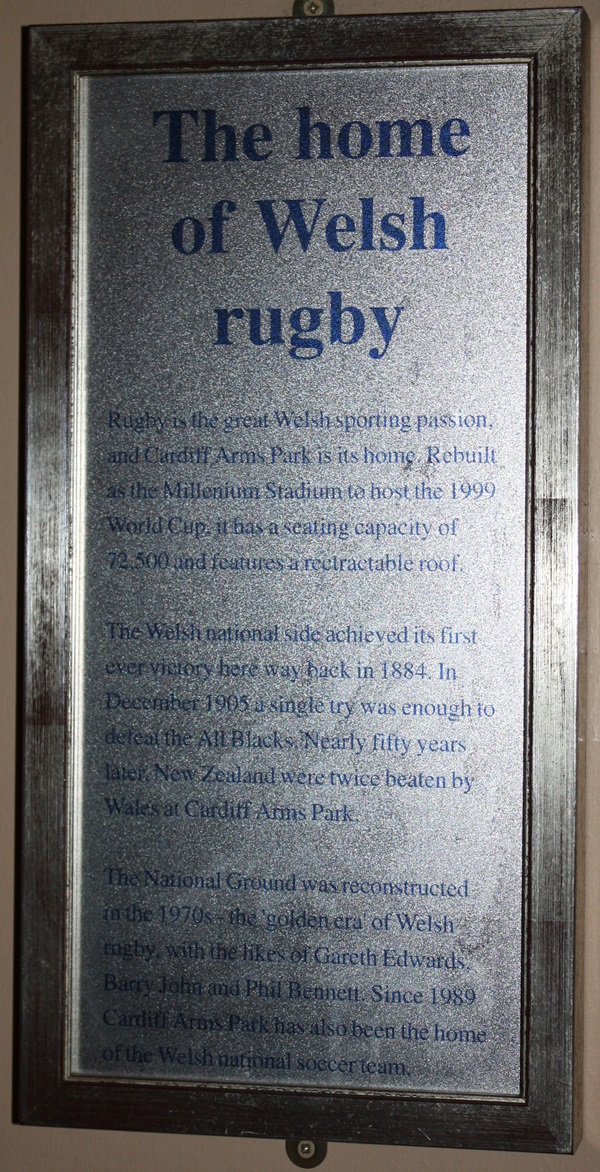
The text reads:
Rugby is the great Welsh sporting passion, and Cardiff Arms Park is its home. Rebuilt as the Millennium Stadium to host the 1999 World Cup, it has a seating capacity of 72,500 and features a retractable roof.
The Welsh national side achieved its first ever victory here way back in 1884. In December 1905 a single try was enough to defeat the All Blacks. Nearly fifty years later, New Zealand were twice beaten by Wales at Cardiff Arms Park.
The National Ground was reconstructed in the 1970s – the ‘golden era’ of Welsh rugby, with the likes of Gareth Edwards, Barry John and Phil Bennett. Since 1989 Cardiff Arms Park has also been the home of the Welsh national soccer team.
Framed collection of photographs highlighting Cardiff’s rugby history.
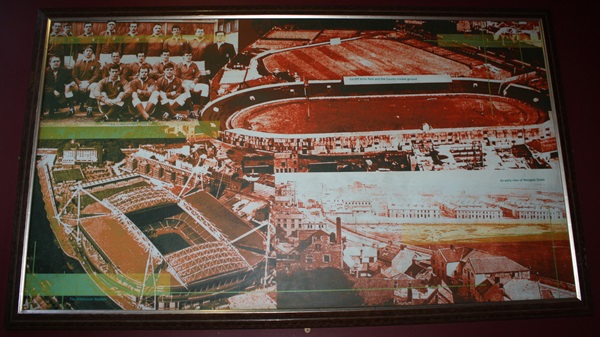
Photographs include:
Triple Crown Winners, 1969;
Cardiff Arms Park and the County cricket ground;
An early view of Westgate Street;
The Millennium Stadium.
Framed collection of photographs of Welsh rugby in Cardiff.
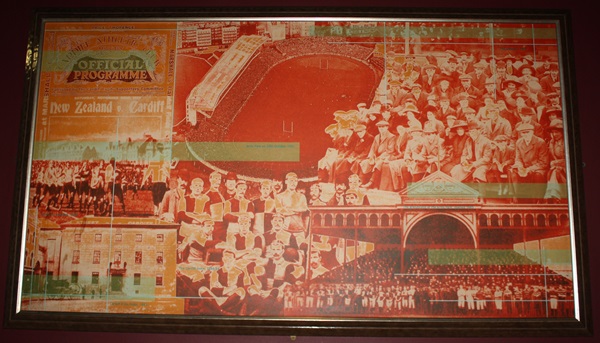
Photographs include:
Cardiff Arms Hotel, 1882;
The Cardiff team, 1888/89;
The grandstand at the Arms Park, opened 1885;
The crowd, c 1910; Arms Park on 20th October 1951;
Cardiff v Leicester, 1909. Also includes an official match day programme for an early clash between New Zealand and Cardiff.
A framed Cardiff RFC rugby shirt, signed by the team.
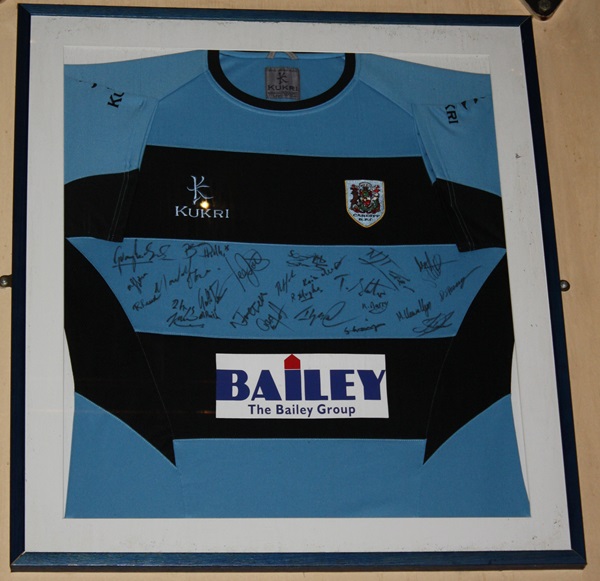
A framed Glamorgan Dragons shirt, signed by the team.
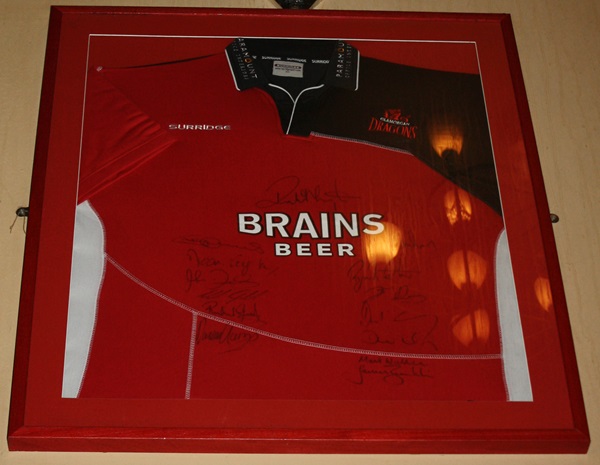
A framed collection of photographs of Cardiff’s football history.
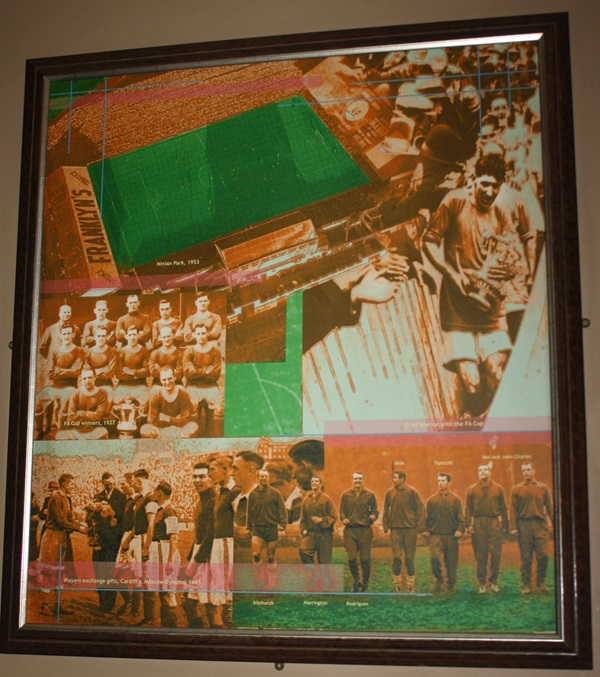
Photographs include:
Ninian Park, 1953; Fred Keenor with the FA Cup;
Allchurch, Harrington, Rodrigues, Hole, Tapscott, Mel and John Charles;
Players exchange gifts, Cardiff v. Moscow Dynamo, 1945;
FA Cup winners, 1927.
A framed collection of photographs of Welsh football players.
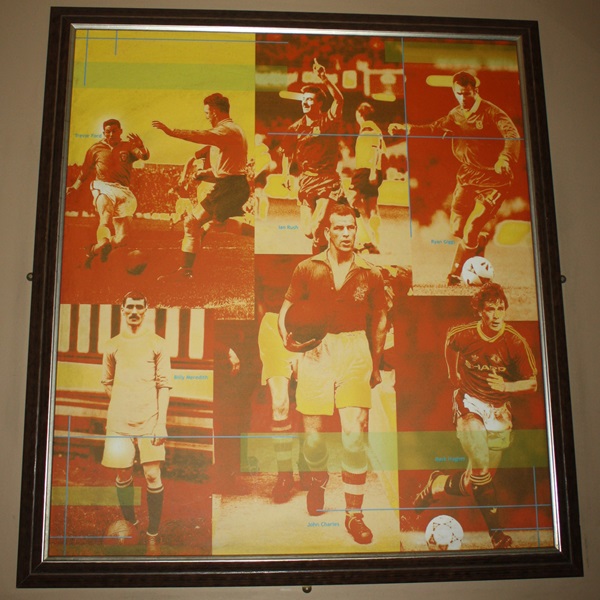
Photographs include:
(clockwise from top left) Trevor Ford;
Ian Rush;
Ryan Giggs;
Mark Hughes;
John Charles;
Billy Meredith.
A framed passage telling of the 1958 Empire and Commonwealth Games, held in Cardiff.
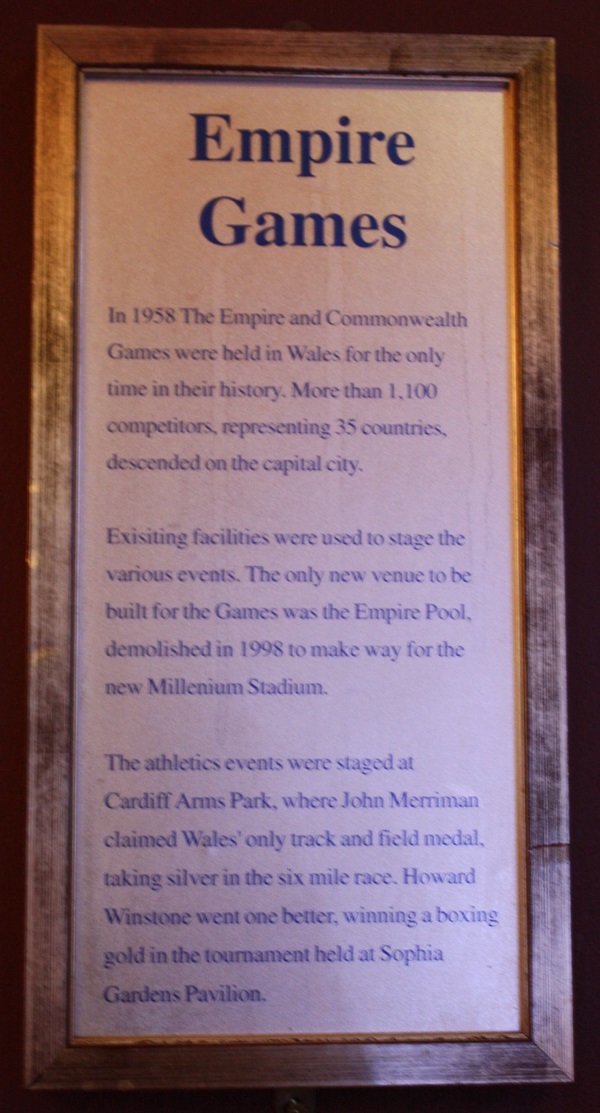
The text reads: In 1958 The Empire and Commonwealth Games were held in Wales for the only time in their history. More than 1,100 competitors, representing 35 countries, descended on the capital city.
Existing facilities were used to stage the various events. The only new venue to be built for the Games was the Empire Pool, demolished in 1998 to make way for the new Millennium Stadium.
The athletics events were staged at Cardiff Arms Park, where John Merriman claimed Wales’ only track and field medal, taking silver in the six mile race. Howard Winstone went one better, winning a boxing gold in the tournament held at Sophia Gardens Pavilion.
A framed collection of photographs and illustrations from the history of Glamorgan County Cricket Club.
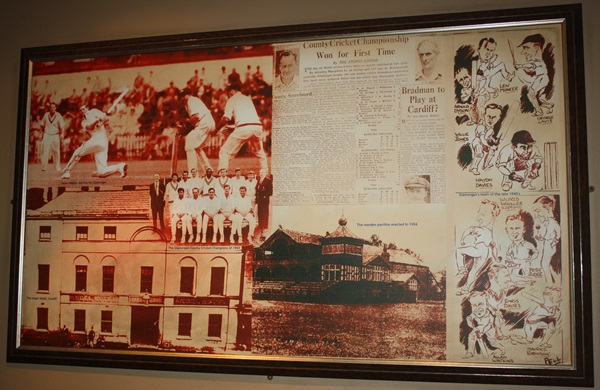
Photographs include:
Peter Walker batting for Glamorgan;
The Glamorgan County Cricket Champions of 1969;
The Angel Hotel, Cardiff;
newspaper cutting following Glamorgan becoming county cricket champions in 1948;
the wooden pavilion erected in 1904;
Glamorgan’s team of the late 1940’s.
A closer view of the newspaper cutting, following Glamorgan becoming county cricket champion in 1948.
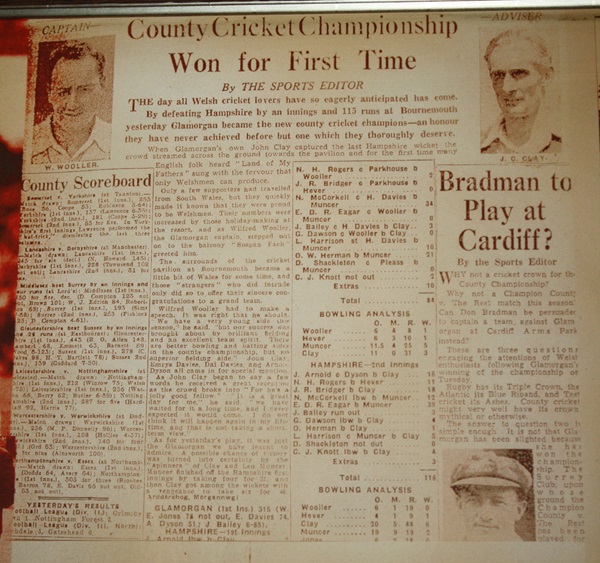
The subheading reads: The day all Welsh cricket lovers have so eagerly anticipated has come. By defeating Hampshire by an innings and 115 runs at Bournemouth yesterday Glamorgan became the new county cricket champions – an honour they have never achieved before but one which they thoroughly deserve.
Framed artwork and text about the history of the pub’s site.
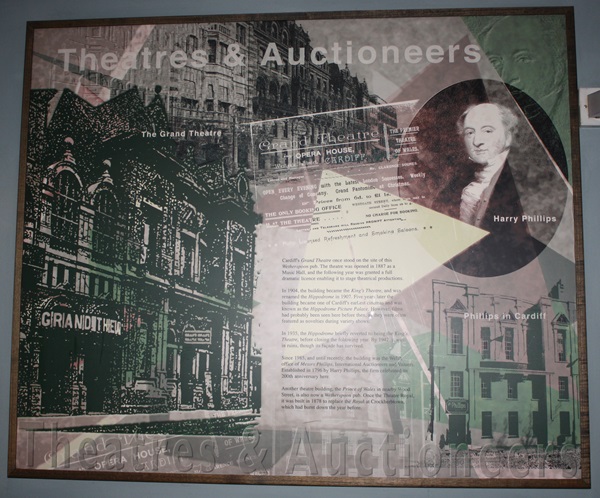
The text reads: Cardiff’s Grand Theatre once stood on the site of this Wetherspoon pub. The theatre was opened in 1887 as a Music Hall, and the following year was granted a full dramatic licence enabling it to stage theatrical productions.
In 1904, the building became the King’s Theatre, and was renamed the Hippodrome in 1907. Five years later the building became one of Cardiff’s earliest cinemas and was known as the Hippodrome Picture Palace. However, films had probably been seen here before then, as they were often featured as novelists during variety shows.
In 1935, the Hippodrome briefly reverted to being the King’s Theatre, before closing the following year. By 1942, it was in ruins, though its façade has survived.
Since 1985, and until recently, the building was the Welsh office of Messrs Phillips, International Auctioneers and Valuers. Established in 1796 by Harry Phillips, the firm celebrated its 200th anniversary here.
Another theatre building, the Prince of Wales in nearby Wood Street, is also now a Wetherspoon pub. Once the Theatre Royal, it was built in 1878 to replace the Royal at Crockherbtown, which had burnt down the year before.
A blue plaque marking the site of Blounts Gate.
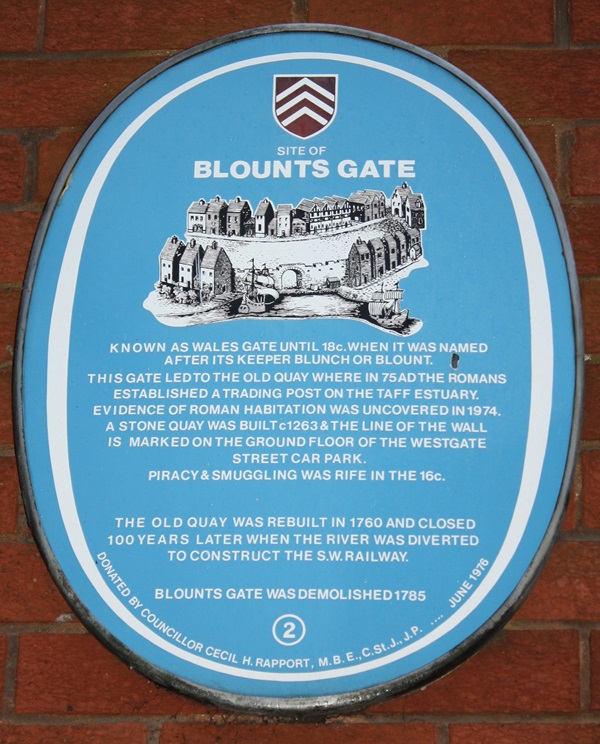
The plaque reads: Known as Wales Gate until 18c. when it was named after its keeper Blunch or Blount.
This gate led to the old quay where in 75AD the Romans established a trading post on the taff estueary. Evidence of Roman habitation was uncovered in 1974. A stone quay was built c1263 & the line of the wall is marked on the ground floor of the Westgate Street car park.
Piracy & smuggling was rife in the 16c.
The old quay was rebuilt in 1760 and closed 100 years later when the river was diverted to construct the S.W.Railway.
Blounts Gate was demolished 1785.
A framed label detailing a brief history of the artist from which several paintings in this pub were commissioned.
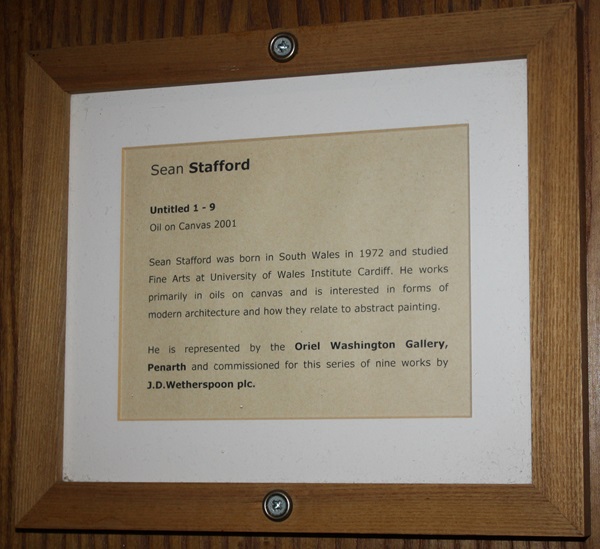
The text reads:
Sean Stafford
Untitled 1 – 9
Oil on Canvas 2001
Sean Stafford was born in South Wales in 1972 and studied Fine Arts at University of Wales Institute Cardiff. He works primarily in oils on canvas and is interested in forms of modern architecture and how they relate to abstract painting.
He is represented by the Oriel Washington Gallery, Penarth and commissioned for this series of nine works by J.D.Wetherspoon plc.
Some of Stafford’s commissioned works.
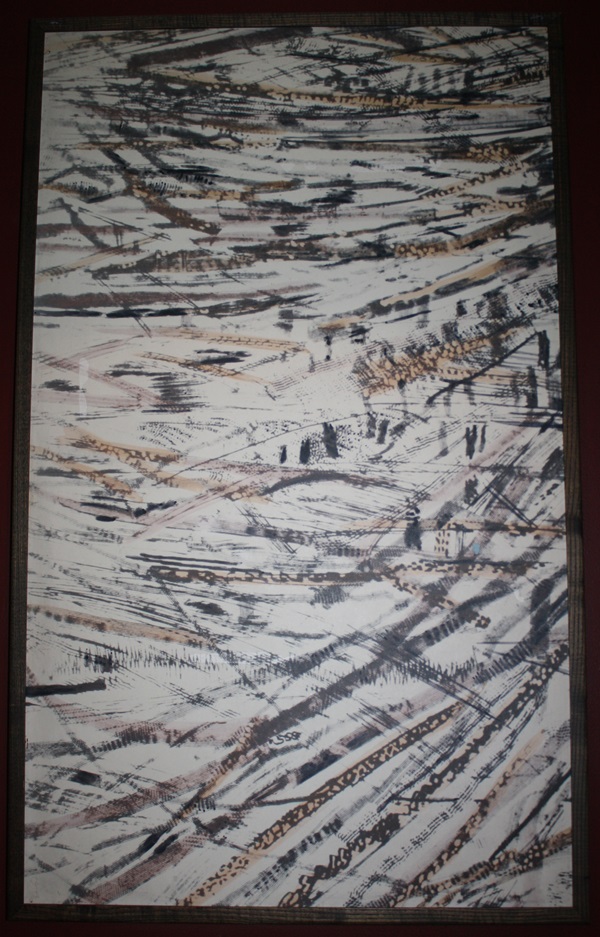
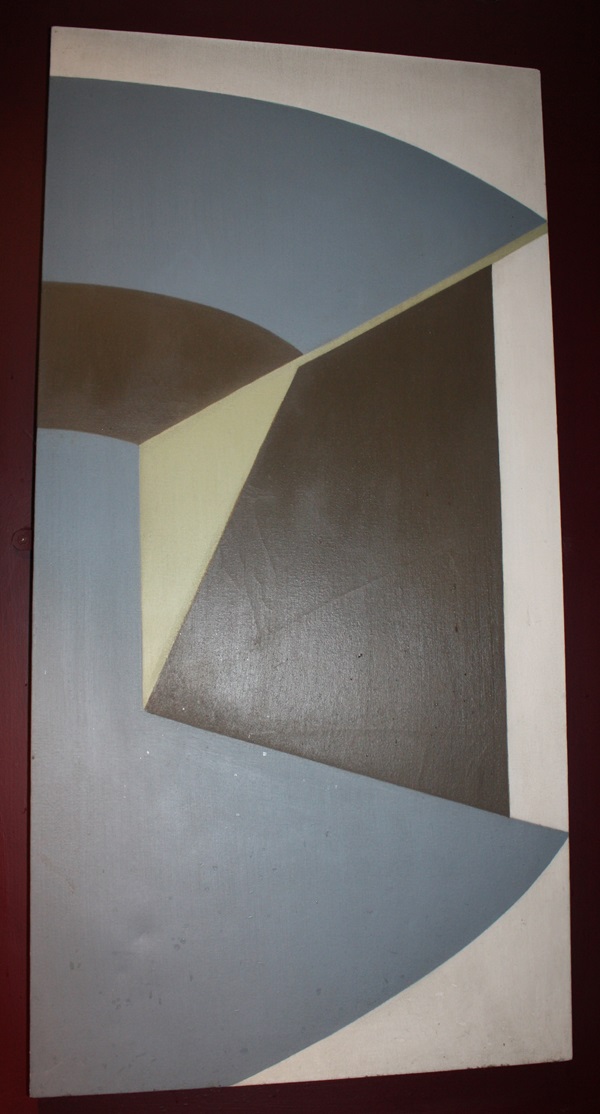
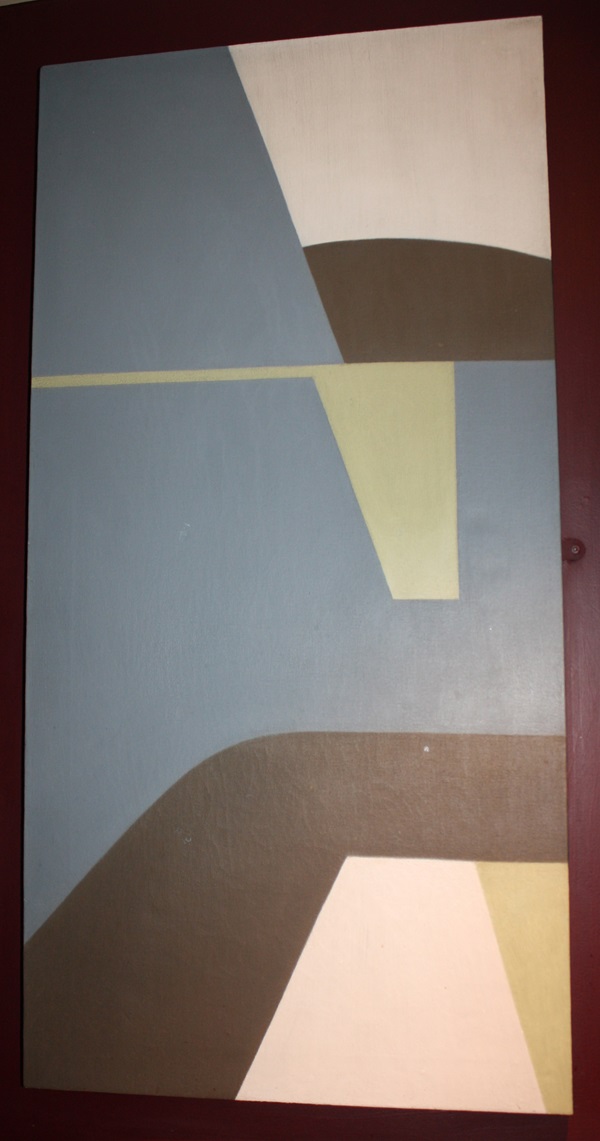
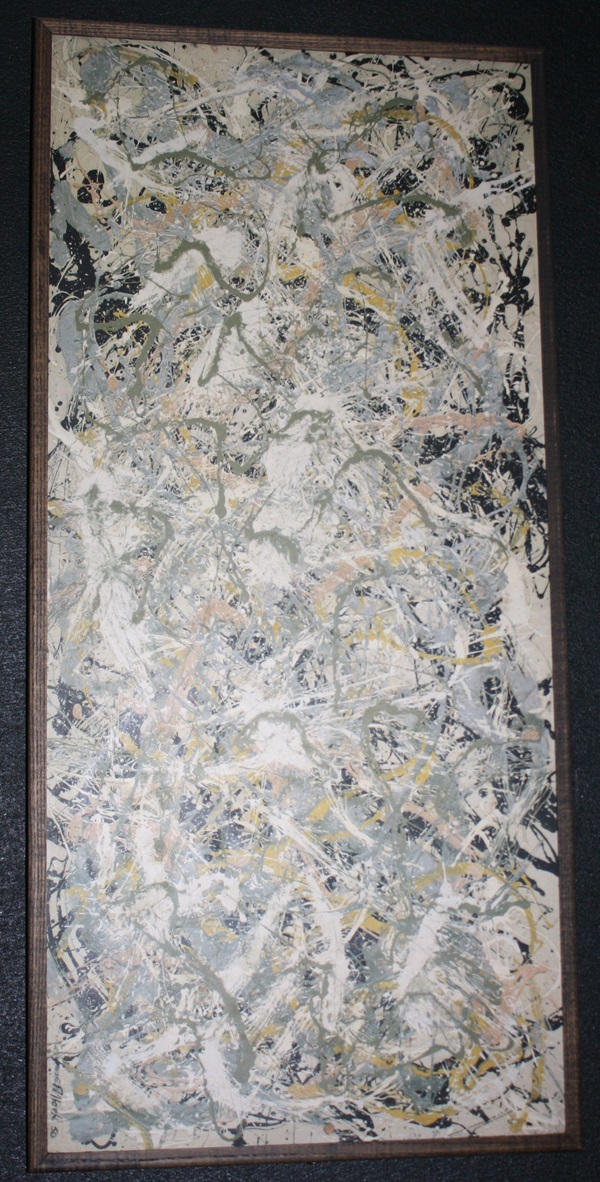
External photograph of the building – Womanby Street entrance.
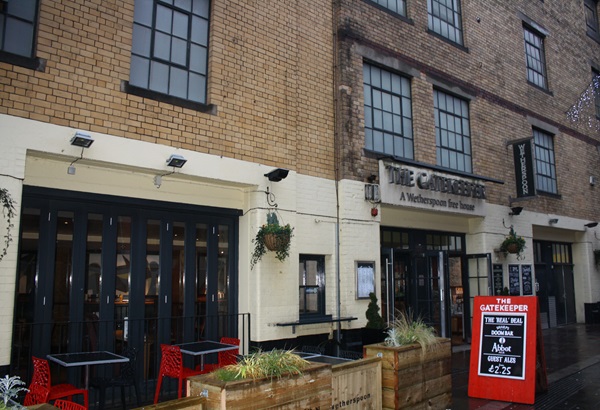
If you have information on the history of this pub, then we’d like you to share it with us. Please e-mail all information to: pubhistories@jdwetherspoon.co.uk